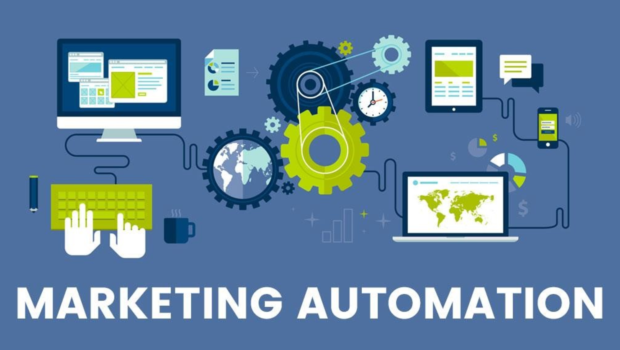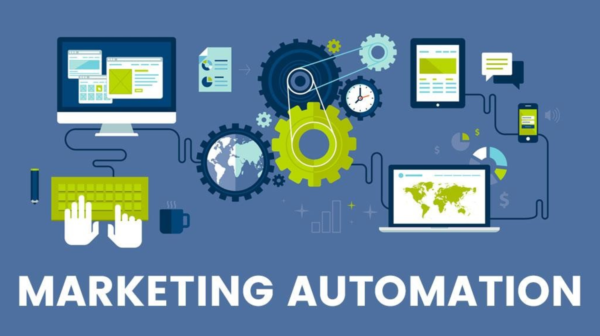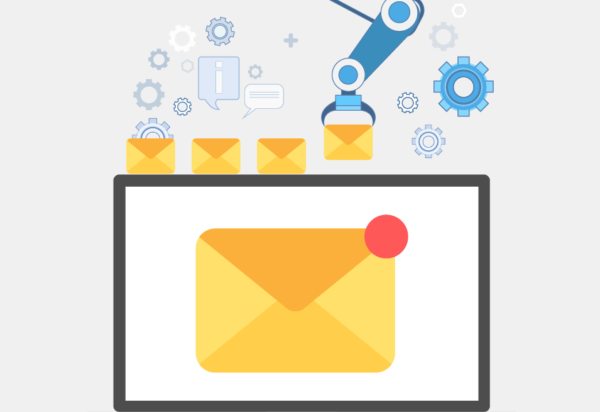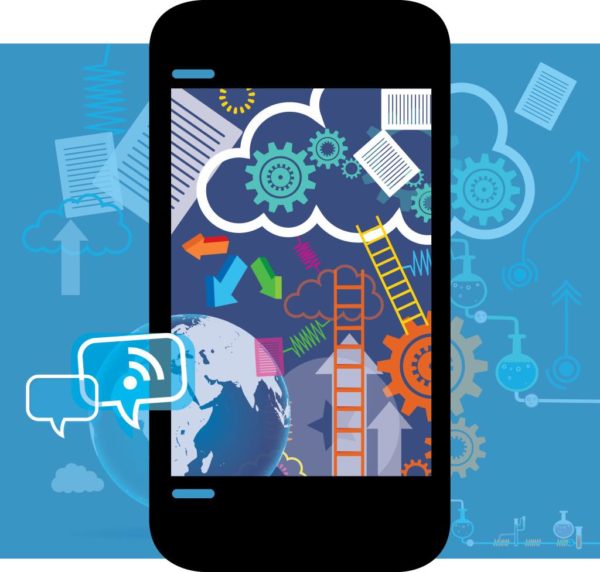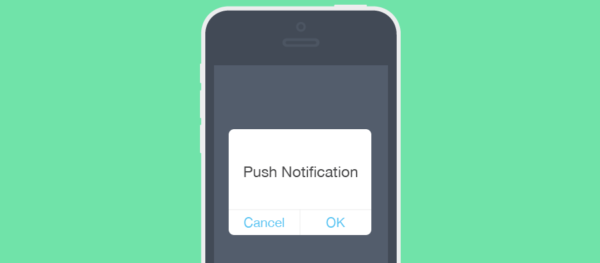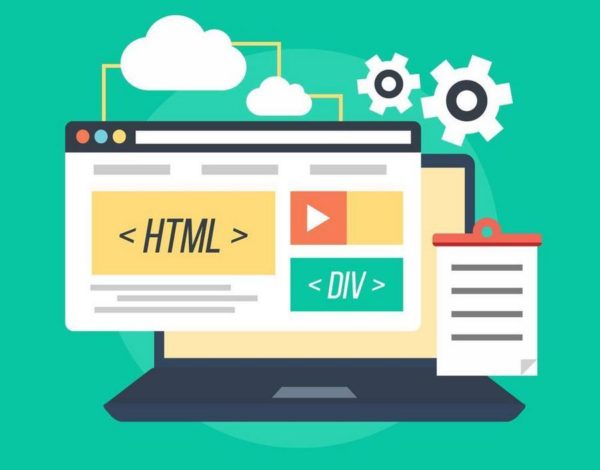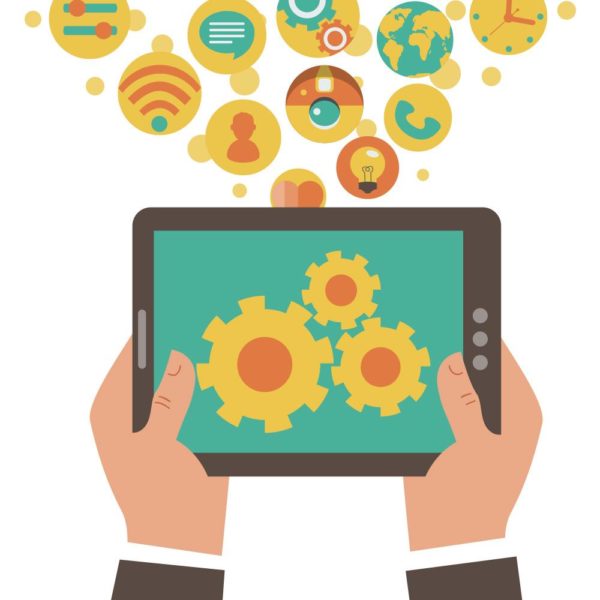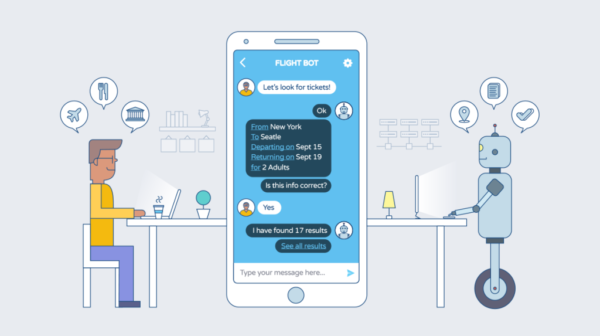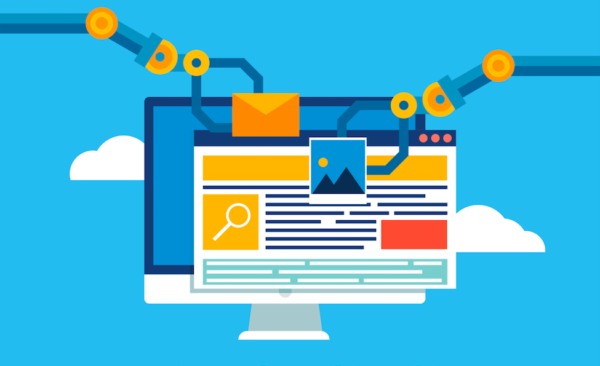How Marketing Automation Can Help Convert High Volume Website Traffic Into Leads
Turning leads into customers is one of the most important aspects of marketing. And helping marketers in that journey is automation. What was once a marketing trend has come a long way to becoming a crucial part of brands’ operations.
This article will discuss how automation works its magic, while allowing marketers to focus on the more important aspects of their jobs.
Image source: crmoperatoren.no
What Does Marketing Automation Do?
Essentially, marketing automation entails using a suite of tools designed to execute marketing tasks without manual effort, such as scheduling social media posts or sending personalized and targeted emails.
For example, when applied to email marketing, it automates ongoing conversations with customers and leads – keeping them engaged and helping to guide them towards the end of a sales funnel.
Why is automation important
Marketing automation brings a host of benefits to the company, and it’s why many consider automation to be the future (if not the present) of digital marketing.
Stats showed that 56 percent of all online traffic comes from an automated source (bots) and less than half is from humans.
One study found that 78 percent of marketers believe automation increases revenue, while 75 percent of brands using automation claim to see ROI in just under 12 months.
Here are some of the other benefits marketing automation brings to your company:
1. It saves time and money
According to this Entrepreneur, automating social media posts and ads saves marketers more than six hours per week on social media management alone. It also ensures that updating your social media presence with fresh content doesn’t get lost in an oft-hectic marketing mix.
As well, it significantly reduces logistical costs from tasks like physically conducting interviews (or focus group discussions), gathering customer testimonials, and other similar tasks.
2. Smart targeting
Using data collected by the company, automated marketing systems can deliver better audience targeting than manually doing so can ever hope to do.
As noted by Smart Insights, these automated systems can analyze target data in a micro fraction of the time it would take to do so manually, while delivering data-based results.
3. Efficient content management
As alluded to earlier, it’s much easier to send out personalized messaging that keeps consumers engaged when its delivery is automated.
As well, automation platforms are capable of detecting the optimal time of delivery based on individual customers’ actual online behavior. Not only will you be sending out more personalized messages, it’s sent at the best possible time for them to see it.
4. Faster turnaround
Depending on your marketing goals (e.g. increasing reach and engagement, higher conversion rates), marketing automation allows you to get almost immediate feedback and find out if a particular campaign works. This gives you precious time to either do more of the same or shift to another strategy.
How Marketing Automation Converts Leads Into Customers
Now for the fun part. As you know, marketing uses a plethora of communication channels – and what’s great about marketing automation is that you can apply it to virtually all of them.
1. Email
Image source: juvlon.com
Despite the prominence of social media, email remains one of the most effective channels of online communication. Changing algorithms make it difficult for people to see your content. Emails, on the other hand, go straight to their inboxes.
And with automation, you can integrate your email marketing system and website with tracking platforms like Google Analytics, which will allow you to gather vital information about subscribers.
As noted by Smart Insights, by using data from email campaigns, user behavior on web pages, and specific user actions, marketers can craft a personalized email sequence, like this example from Freshmail that could usher subscribers into whichever action you desire.
How it nurtures leads
As in the Freshmail example, email sequences can be crafted with the specific goal of turning leads into customers. It starts by following the subscriber’s opt-in. An activation/thank you email can also contain attractive offers for the archetypal persona.
Then, say after seven days (and with more data collected from the subscriber), an automated email can be sent with special discounts on discontinued items, along with details on how to avail of free shipping.
By sending these series of personalized, automated emails, you give yourself the chance to be top of mind for subscribers, putting them in a better position to make a purchase decision that your emails helped usher.
2. SMS
Image source: stickyminds.com
Despite being one of the oldest forms of digital communication, SMS, together with email, has been called the power couple of marketing automation.
According to Active Trail, email marketing campaigns are a staggering 325 percent more effective when combined with SMS marketing. This is because people tend to open and read their text messages, with 90 percent of them doing so within three minutes. On top of that, 34 percent of subscribers who receive marketing SMS visit the company website, while 33 percent visit the physical store.
Here are other benefits of SMS:
- It’s always on – As long as the subscriber’s phone is on and they have reception, they’ll get your text immediately. That is not the case for nearly all other communications channels.
- Everyone reads their texts – They might not respond to it the way you would hope, but you’re pretty sure that they’ll get to at least read your message. You can’t say that for any other channel. As well, unlike social media that appeals to a younger demographic, everyone from a grade schooler to a grandma uses SMS.
How it nurtures leads
You can even use SMS as a way for users to opt-in, as Chuck E. Cheese does so simply. Basically, they lured people in by offering special coupons in exchange for texting an email address to a number. Strategies like this were already affective during its day, but with automation, you can up the ante by similarly creating nurturing sequences via SMS.
Say, an email with an offer doesn’t get opened after three days. You can use tools like Twilio to send the same offer (or something even more enticing) via SMS.
As noted by Autopilot, you can also use SMS on the front-end of drip email campaigns to increase opt-ins, in the middle of the sales process to re-engage cold prospects, or on the back-end to generate repeat business and referrals.
3. Push notifications
Image source: amazingcart.us
These are notifications – clickable, rich content messages – that are sent to subscribers’ mobile device or desktop even when they aren’t on the app or website.
As noted by iZooto, push notifications are best used for delivering time-bound content designed to engage (retarget or activate dormant) users.
4. Web
Image source: screenster.io
If you’ve been online on your desktop computer recently, you may have noticed that pop-up asking if you want to allow notifications from a particular website. Those that agree are the ones who will receive web push notifications.
Some of the benefits of using automating this channel include:
- Adjustable time of delivery based on user’s activity
- Ability to create several agreement forms
- Simple implementation, as opposed to crafting and sending emails
How it nurtures leads
Browser push notifications can be personalized to specific users or to specific segments of your market. As opposed to SMS or email, those who opt-in are not required to provide their personal information.
You can then send real-time updates to subscribers, allowing you to instantly communicate with them via notifications on their phone’s sliders or desktop browsers. Web push notifications can also be customized so that the content you will send is tailor-fitted to your subscriber’s preferences (e.g. new blog posts, new offers/sales, bring them back to an abandoned shopping cart, or ask for feedback)
Buy Whole Foods Online, a UK-based e-commerce website, received an average click rate of 10.12 percent when they started to experiment with push notifications. The company re-engaged their customers by notifying them of any new product on discount, resulting in a three-digit revenue. They key here is to optimize your copy and keep testing to find out the best time to send your notifications.
5. Mobile
Image source: rapidvaluesolutions.com
The benefits of push notifications increase when it comes to mobile, as marketers can reach customers who downloaded their native apps based on physical location. This is accomplished by using GPS and geofencing technologies.
Plus, the fact that people are almost always with their phones exponentially increases the chances of them getting a targeted message. And because mobile push notifications have become designed to look like SMS, people get to read the gist of your messaging even without clicking.
How it nurtures leads
While push notifications are a great way to engage your audience (notifying when new content is published, news, and game results) – it’s an equally powerful tool for lead nurturing.
In 2016, 21 percent of all web notifications users belong to the e-commerce industry – and that’s because it works.
Push notifications can be used to notify subscribers when the latest iPhone, the latest collection, or the latest sneaker model comes out. For users who have items on their wish lists, you can send a notification informing them of a discount on those items; while a similar approach can be done for abandoned carts.
6. Chatbots
Image source: medium.com
As chatbots become smarter in being able to address customers’ concerns, people have become more and more acclimated with interacting with them.
With several platforms now offering automated solutions for chatbots, marketers can now automatically send messages when users trigger specific replies from the bots. It’s now also easier to create message sequences that can help guide the user to a desired action. Much like other automated communication channels, you can set the exact date and time when you want users to receive your content.
How it nurtures leads
Chatbots are a great way to give potential customers the instant response they’ve come to expect. It’s also a great way to gather more information that’ll help you determine exactly where in the sales journey a particular lead is.
And depending on how leads interact with chatbots (e.g. how they respond to a specific question, if they type in a particular inquiry), you can send them useful information, links, or offers that can help hasten their buyer journey. Chatbots can even transition a hot lead to an agent or sales assistant to close.
7. On-site marketing automation
Image source: emarsys.com
The great thing about this strategy is that people are already on your website, which means they’re aware of who you are and what you do. The problem is that most websites have a static one-size-fits-all marketing message for ALL website visitors, with the wrong calls-to-action.
As pointed out by ConvertFlow, it makes no sense for you to have targeted messaging with other channels of communication – and not do the same with your website.
How it nurtures leads
It could be as simple as reminding them of an abandoned cart, using pop-ups to guide visitors towards a targeted page (you can also use pullout tabs, sticky bars, and inline templates)—the important thing is that you put in the system that’s able to personalize messaging, and respond to their actions accordingly.
Convertflow notes that the crucial point to on-site lead nurturing is to create a system wherein your website is capable of knowing who your visitors are, what they’re doing, what kind of interactions they’ve had with your company on other communication channels, and what stage of the buying cycle they’re in.
While not everyone has the resources to personalize their websites for each customer, neglecting to even make an effort makes for tons of lost opportunities.
8. Retargeting
Image source: brandlabs.us
As pointed out by MailChimp, while you’re never quite certain how a lead’s journey towards becoming a customer might be, one thing you can be certain of is that you can always retarget them.
One example of retargeting at work is remarketing ads.
You can’t miss them. You go to a website to check a product out, and virtually everywhere you go online, there’s an ad for that and similar products. It’s a great way to keep your product in the minds of potential customers. According to MailChimp, if your website gets at least 100 monthly visitors, you should be using Google remarketing ads.
You can also use retargeting in line with the other channels mentioned above—send an email to a person who abandons cart, or push notifications to inform of discounted offers.
By combining all channels of communication into an aligned marketing automation strategy, the possibilities are endless.
How it nurtures leads
Another way you can advance leads down the funnel is through Remarketing for Search Ads (RLSA), which is a way to reach prospects when they are searching.
As noted by Search Engine Land, essentially, your site’s Google Analytics can tell you what a lead continues to search for after leaving your site.
Prospects that have opted-in have expressed interest in what you can potentially offer, so getting a grasp of what the community is saying about you and what other solutions similar to what you can offer are out there, helps you understand how a lead is transitioning along the customer journey.
Ensuring that your RSLA is tailored to specific leads’ journeys puts you in the best position to turn leads into customers.
Takeaway
Marketing automation is no longer the future of digital marketing—it is the present. From targeting and personalization, to optimal delivery schedules, automation brings with it a wealth of advantages to marketers that not only make campaigns more efficient, but make them more effective as well.
What marketing communication channels do you have where you think automation can work?

